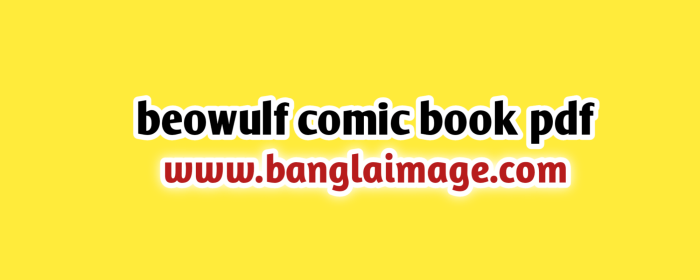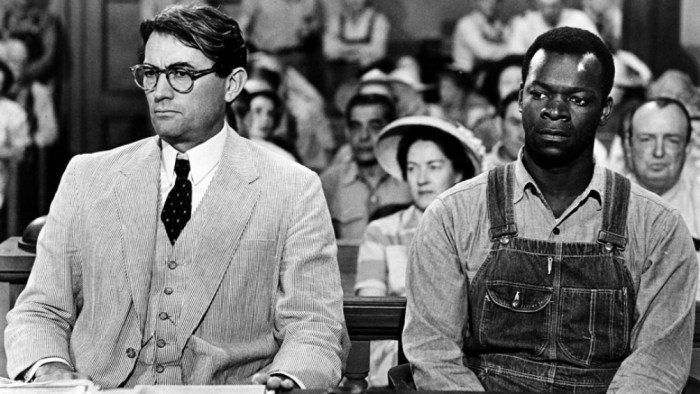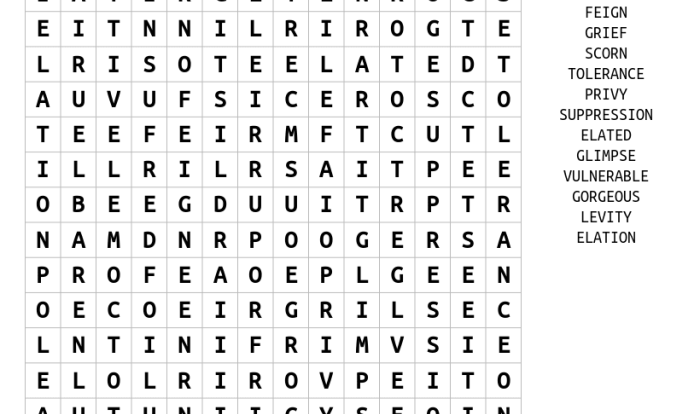Embark on a literary adventure with the Beowulf Graphic Novel Answer Key, your essential guide to unraveling the complexities of this timeless Anglo-Saxon epic. Within these pages, discover a treasure trove of insights, from the intricate use of literary devices to the profound themes that resonate through time.
Delve into the tapestry of the graphic novel’s narrative, exploring the heroic journey of Beowulf, the monstrous threats he confronts, and the enduring legacy of good versus evil. Prepare to be captivated by the graphic novel’s unique interpretation of this ancient tale, offering fresh perspectives and engaging insights.
Epic Elements in the Beowulf Graphic Novel
The Beowulf graphic novel retains many of the epic elements found in the original Anglo-Saxon poem. These elements contribute to the story’s grandeur and timelessness, immersing readers in a world of heroes, monsters, and ancient battles.
Alliterative Language
Alliteration, the repetition of consonant sounds at the beginning of words, is a hallmark of Anglo-Saxon poetry. The graphic novel incorporates this technique to create a sense of rhythm and emphasis:
- “He fought with his hands and his heart”
- “The monster was mighty and mean”
Kennings
Kennings are compound words or phrases that create vivid and often metaphorical descriptions. The graphic novel uses kennings to add depth and texture to the characters and events:
- “Whale-road”(the sea)
- “Sword-storm”(battle)
Fate and Free Will
The story of Beowulf grapples with the interplay between fate and free will. While the characters are bound by destiny, they also possess the agency to shape their own choices. This tension adds complexity and drama to the narrative:
- Beowulf’s destiny is to fight and defeat the monster Grendel, but he chooses to do so out of a sense of duty and honor.
- The characters’ choices have consequences, both positive and negative, shaping the course of the story.
Character Analysis in the Beowulf Graphic Novel
The Beowulfgraphic novel presents a cast of characters with distinct traits and motivations that drive the narrative forward. This analysis explores the characterization of Beowulf, Grendel, and Hrothgar, providing insights into their personalities, actions, and the significance of their journeys.
Character Traits Comparison
| Trait | Beowulf | Grendel | Hrothgar |
|---|---|---|---|
| Strength | Immense physical prowess | Supernatural, monstrous strength | Wise and experienced, but lacks physical strength |
| Courage | Fearless, unwavering determination | Violent, driven by hatred | Worried, but maintains composure |
| Loyalty | Bound to Hrothgar, fights for Geats | Isolated, driven by revenge | Responsible for his people, seeks help |
| Motivation | Glory, honor, and duty | Revenge for father’s death | Protection of his kingdom and people |
Beowulf’s Journey
Beowulf’s journey to Heorot is a pivotal aspect of the narrative. He sails from Geatland to Denmark, driven by a desire for glory and a sense of duty. Upon arriving, he confronts Grendel and his mother, emerging victorious. His triumph over these monstrous threats restores peace to Heorot and earns him widespread renown.
The significance of Beowulf’s journey lies in its representation of the heroic ideal. He embodies the values of courage, loyalty, and strength, inspiring others with his actions. His victory over Grendel and his mother symbolizes the triumph of good over evil and the restoration of order.
Grendel and His Mother’s Motivations
Grendel and his mother are driven by a deep-seated hatred for humans. Grendel’s father was killed by Hrothgar, igniting a thirst for revenge that manifests in his attacks on Heorot. His mother, a powerful witch, seeks to avenge her son’s death and protect her remaining child.
Their motivations stem from a sense of loss and isolation. They are outsiders, feared and rejected by the human community. Their actions are a desperate attempt to reclaim a place in the world and to avenge the wrongs they have suffered.
Themes and Symbolism in the Beowulf Graphic Novel

The Beowulf graphic novel explores several major themes, including the eternal struggle between good and evil and the importance of loyalty and betrayal. The novel also makes use of powerful symbolism, such as the mead-hall and the dragon, to convey these themes.
Good vs. Evil
The conflict between good and evil is a central theme of the Beowulf graphic novel. Beowulf, the hero of the story, represents good, while Grendel, the monster he fights, represents evil. The battle between Beowulf and Grendel is a symbolic representation of the eternal struggle between good and evil in the world.
Loyalty vs. Betrayal
Loyalty and betrayal are also important themes in the Beowulf graphic novel. Beowulf is a loyal warrior who is always willing to fight for his king and his people. However, he is also betrayed by some of his closest allies, including his own nephew, Wiglaf.
The novel explores the consequences of betrayal and the importance of loyalty in a world where trust is often difficult to come by.
Symbolism
The Beowulf graphic novel makes use of several powerful symbols to convey its themes. The mead-hall is a symbol of community and fellowship, while the dragon is a symbol of chaos and destruction. The battle between Beowulf and the dragon is a symbolic representation of the struggle between good and evil in the world.
Significance of the Ending
The ending of the Beowulf graphic novel is significant because it shows the consequences of Beowulf’s actions. Beowulf defeats the dragon, but he is mortally wounded in the process. His death is a reminder that even the greatest heroes are not invincible and that the struggle between good and evil is never truly over.
Adaptations and Interpretations of the Beowulf Graphic Novel
The graphic novel adaptation of Beowulf offers a unique interpretation of the epic poem, distinct from other adaptations such as films or prose translations. The graphic novel format brings a fresh perspective to the story, utilizing visual elements and storytelling techniques that enhance the reader’s experience.
Unique Contributions of the Graphic Novel Format
The graphic novel format allows for a more immersive and engaging reading experience. The visual storytelling technique employs illustrations, panels, and sequential art to convey the narrative. This format enables readers to visualize the characters, settings, and events more vividly, creating a deeper connection with the story.
The graphic novel also incorporates innovative visual elements to enhance the storytelling. For instance, the use of color and shading helps create atmosphere and evoke emotions. The dynamic panel layouts and transitions contribute to the pacing and flow of the narrative, guiding the reader’s attention and emphasizing key moments.
Cultural and Historical Influences, Beowulf graphic novel answer key
The graphic novel adaptation of Beowulf is influenced by various cultural and historical factors. The illustrator’s artistic style, choice of colors, and character designs reflect the cultural context and historical period in which the adaptation was created. For example, the graphic novel may incorporate elements of contemporary culture, such as modern fashion or technology, while still maintaining the core themes and characters of the original epic poem.
Moreover, the adaptation may draw inspiration from historical research and archaeological findings to depict the setting and characters more authentically. This can include the depiction of weapons, clothing, and architectural structures that are consistent with the Anglo-Saxon period.
Questions and Answers: Beowulf Graphic Novel Answer Key
What is the significance of alliteration in the Beowulf graphic novel?
Alliteration enhances the oral tradition of the epic, creating a rhythmic and memorable effect that emphasizes key words and phrases.
How does the graphic novel depict the role of fate and free will?
The graphic novel explores the interplay between fate and free will, highlighting the characters’ agency within the predetermined events.
What are the key themes explored in the Beowulf graphic novel?
The graphic novel delves into themes of heroism, loyalty, betrayal, good versus evil, and the human condition.

